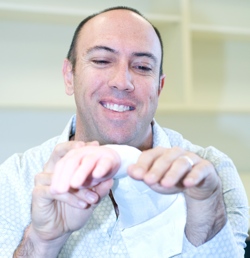The future of physiotherapy education, and the role of social media.

I believe in a world where every physiotherapist is checking every day a physiotherapy website or social media page to get useful information.
That information can be used the same day with their patients.
And ofcourse, Trust me, I’m a “Physiotherapist” is the perfect place for that. 🙂

How the education is nowadays:
We start with the basic education at our local physiotherapy school.
During this time we do internships, where we can apply everything we have learned in real life.
Physiotherapy is basically learning about anatomy, physiology, neurology, orthopaedic physical assesment and a bit communication skills.

This guy dives very deep in his books. I can’t recommend this way of studying.
Better is to keep a bit more distance between the book and your eyes.. this way you can read better.
After studying a lot, you enthusiastically apply it in the clinic with patients, which can be quite challenging (for me it was).

I learned far more in the internships than in physiotherapy school.
I learned more about myself as a person and what it takes to be a physiotherapist.
It was pretty difficult for me to apply what I’ve learned in a correct way, communicate with a patient, and have someone watch your every step to see what you’re doing wrong.
After physiotherapy school you start working, take some courses and maybe get a master’s degree like manual therapy or sports physiotherapy.
I finished my master’s degree in manual therapy and I can say I’ve learned a lot. Especially the open acces to Pubmed articles was awesome.

http://www.ncbi.nlm.nih.gov/pubmed/
I can advice it to everyone who wants to become a better physiotherapist. You learn about the scientific side of the profession and that is very valuable.
Then you are finished with physiotherapy school or master.. and you’re going to apply everything you’ve learned with your patients.
But then the learning curve flattens out.
You maybe read some journals, take some courses, but that’s it.
I feel so lucky I work now as a physio, and not in the 80’s/ 90’s.
Then there were only books and guru’s.
Now there are still books and guru’s, but we also have internet and social media, like Youtube, Facebook, Twitter.
The best educators and researchers are active on social media, like Lorimer Moseley, Peter O’Sullivan and many more.

Peter O’Sullivan

Lorimer Moseley
Your learning curve can be much more steep when you are active on social media.
The threat is, that there is a lot of bullshit on social media/internet too. You have to avoid the bullshit, which can be quite challenging.
This page is about sharing good quality knowledge about the profession of physiotherapy.
When you are better informed as a physiotherapist, you can help your patients better.
In the end, when you look back at your life, you wanna have no regrets and say to yourself: I have done everything I could to make the world around me a better place.
So start now, and make every person or group you come in contact with better.

And when you learn something, why not share it?
Social media is perfect for that.
You can share interesting information with your collegues/friends very fast.
So everybody around you learn more.
That way you create a positive vibe around yourself.
That is why social media is part of the future of physiotherapy education.
<!– WGCCxxx –>
